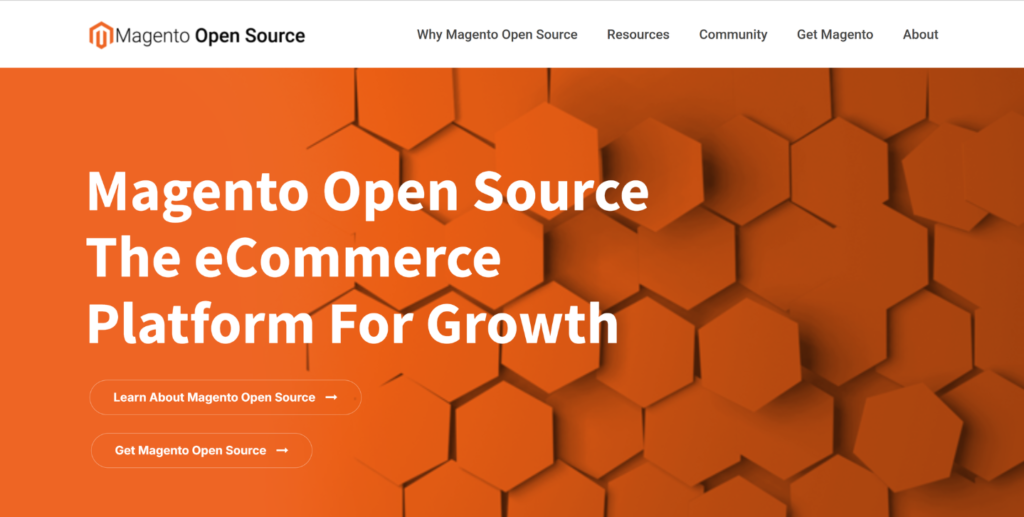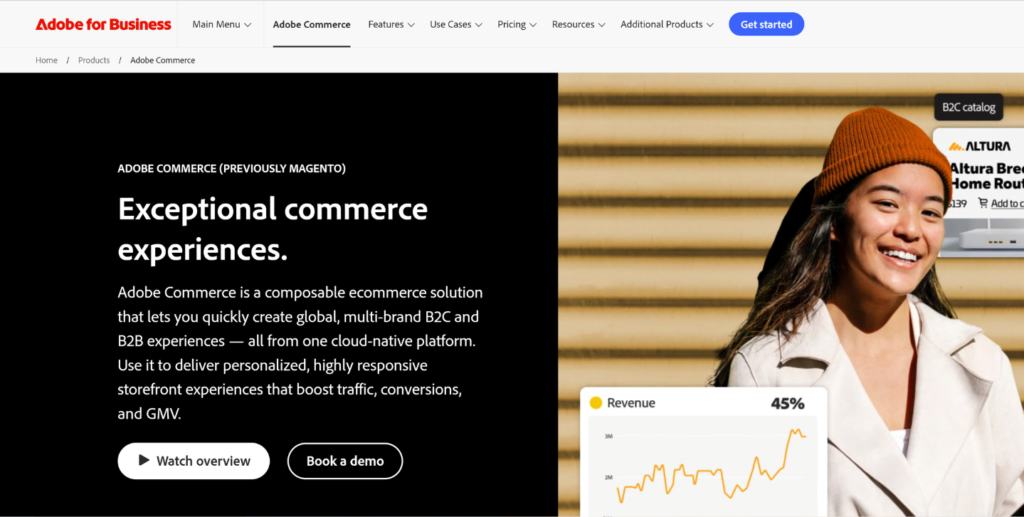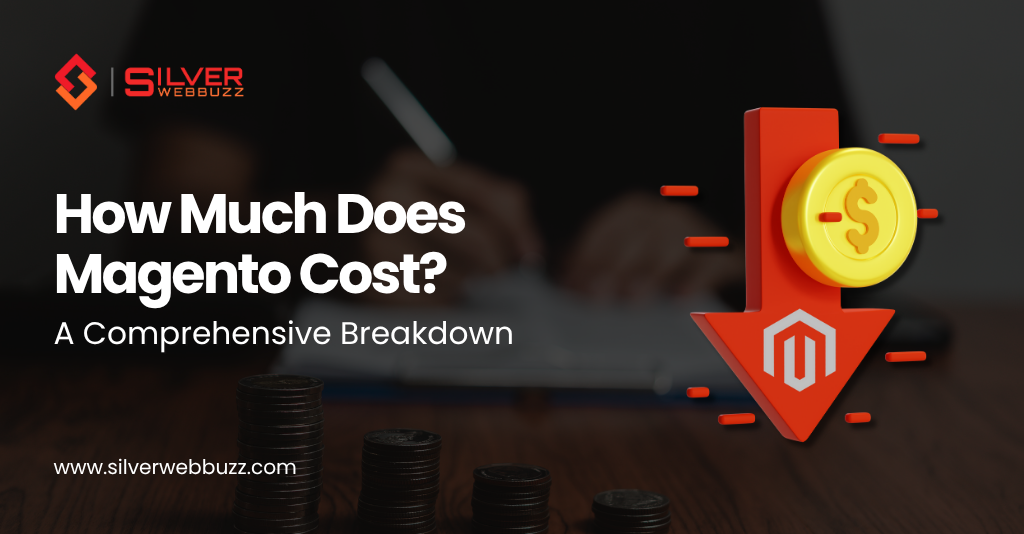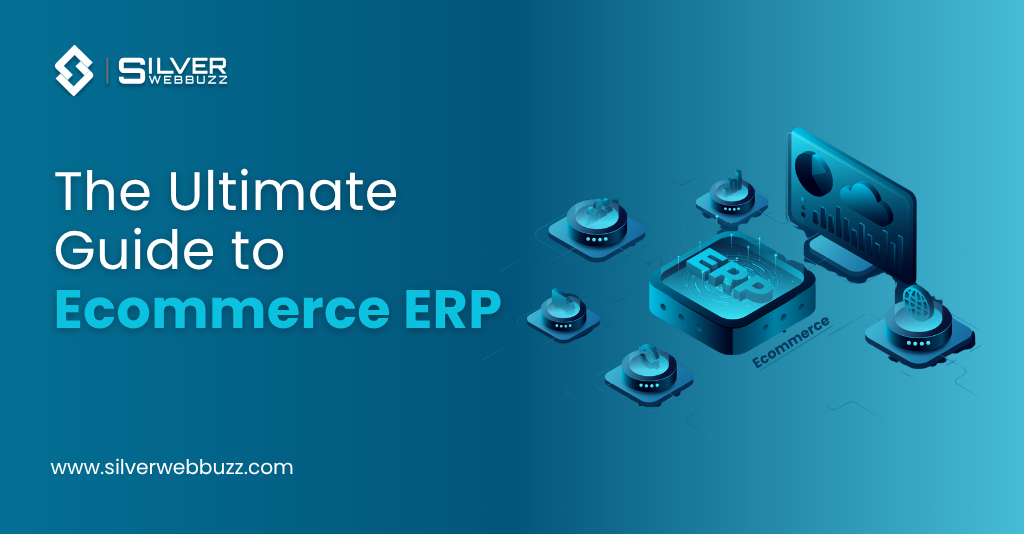Magento, now known as Adobe Commerce, is a robust, feature-rich eCommerce platform trusted by businesses of all sizes, from startups to Fortune 500 companies. While it’s known for its flexibility and scalability, the cost of building, running, and maintaining a Magento store can vary significantly based on your business requirements. If you’re asking yourself, “How much does Magento cost?”, you’re not alone. In this in-depth guide, we’ll explore everything from basic setup costs to Magento enterprise cost and hidden expenses, helping you understand the full picture.
What Is Magento?
Magento, now officially known as Adobe Commerce, is a leading open-source eCommerce platform used by businesses around the world to build powerful and scalable online stores. Known for its flexibility, Magento allows full control over store design, functionality, and user experience, making it a preferred choice for both small businesses and large enterprises.
Originally launched in 2008 and later acquired by Adobe in 2018, Magento offers two main editions: Magento Open Source (free) and Adobe Commerce (paid). With features like multi-store support, advanced product management, and a vast library of extensions, Magento has become a go-to solution for businesses aiming to grow and customize their digital storefronts to meet evolving customer demands.
Magento Pricing Overview
When considering “how much does Magento cost,” it’s essential to understand that pricing isn’t just about the software itself.
Magento Website Cost (Design, Development, Setup)
Understanding the cost is crucial when planning your ecommerce budget. This cost covers everything from the initial design to full setup:
- Design and Themes: While you can start with a free template, most businesses opt for premium or custom designs. A unique design can raise the Magento website cost to between $2,000 and $10,000.
- Development Work: Custom functionality, API integrations, and user experience design can quickly add to the cost. Depending on the scope, development can range from $5,000 to $50,000+.
- Initial Setup: This includes Magento installation, extension setup, SEO configuration, and more. Setup fees can cost between $1,000 and $5,000.
- Third-party Extensions: Needed for payment gateways, marketing, or shipping, these tools vary from $50 to $1,500 each and contribute to the overall website cost.
For a robust online store, expect the website Development cost to be between $10,000 and $100,000+, depending on your business needs and desired features.
Magento Hosting Cost (Server Infrastructure)
A reliable and scalable infrastructure is necessary for performance. The Magento hosting cost depends on the size and traffic of your online store:
- Shared Hosting: Not ideal for Magento, but very low-cost ($10–$20/month).
- VPS Hosting: More stable and scalable, suitable for medium stores, costing between $60 and $300/month.
- Dedicated Hosting: Best for high-traffic ecommerce sites, with hosting costs ranging from $250 to $1,000/month.
- Cloud Hosting: Platforms like AWS, Google Cloud, or managed Magento hosts such as Cloudways offer scalable options from $400 to $6,000/month.
Your Magento hosting cost plays a key role in site speed, uptime, and user experience—making it a critical investment for long-term success.
Magento Commerce Pricing (Based on Business Revenue)
The commerce pricing model isn’t fixed. Instead, it scales based on your business revenue or Gross Merchandise Value (GMV). Here’s what to expect:
- Small Enterprises (Revenue $1M–$5M): Magento commerce pricing starts at around $22,000–$30,000/year.
- Mid-Sized Businesses (Revenue $5M–$10M): Pricing may increase to $45,000–$75,000/year.
- Large Enterprises (Revenue over $10M): For high-volume ecommerce businesses, Magento commerce pricing can exceed $100,000/year.
This flexible pricing ensures that businesses pay based on usage and value derived, making commerce pricing ideal for scalable ecommerce operations.
Adobe Magento Pricing (Official Licensing Cost)
After Magento was acquired by Adobe, all enterprise-level licensing falls under Adobe Magento pricing. There are two editions:
- Magento Open Source: Free to use but comes with separate development, hosting, and maintenance costs.
- Adobe Commerce (Paid License): Officially licensed by Adobe, with costs starting at $22,000/year and going up based on business scale.
Adobe pricing is based on your annual revenue and store complexity, so most businesses receive a custom quote. This approach ensures tailored services but can make budgeting a bit less predictable.
Adobe Commerce Cloud Pricing (Advanced Enterprise Services)
If you’re seeking a complete enterprise solution with integrated hosting, cloud services, and AI-powered features, then Adobe Commerce Cloud pricing is what you need to explore.
- Included Services: Adobe Commerce Cloud includes web hosting, CDN, security, DevOps tools, and 24/7 support.
- AI & Analytics: With Adobe Sensei integration, it offers personalization, advanced analytics, and headless commerce options.
- Cost Estimate: Adobe Commerce Cloud pricing typically starts around $100,000/year, but custom implementations can push it beyond $500,000/year for large-scale businesses.
Magento Open Source vs Adobe Commerce
A leading ecommerce platform provides two core offerings: Magento Open Source and Adobe Commerce (formerly Magento Enterprise). Choosing the right version depends on your business goals, technical expertise, and budget.
Magento Open Source

- Cost: Open Source is free to download and use, making it appealing for small businesses and startups. However, while there’s no license fee, the overall Magento ecommerce cost still adds up when you consider development, hosting, extensions, and ongoing maintenance.
- Ideal For: Startups, developers, and small businesses looking for flexible, open-source ecommerce solutions without a high upfront investment.
- Core Features: Includes essential ecommerce capabilities like product management, catalog browsing, basic SEO tools, checkout, shipping, and payment integration.
- Limitations: No official Adobe support, fewer pre-built features, and limited scalability compared to Adobe Commerce. As your store grows, you may find yourself needing more advanced functionalities.
- Magento Development Cost: Even with the free version, you’ll still need to pay developers for customization and setup. Depending on your store’s complexity, the magento open source development cost can range from $5,000 to $50,000+.
Adobe Commerce (Magento Enterprise)

- Cost: The licensed version, Adobe Commerce, starts at around $22,000/year for on-premise deployment. If you opt for cloud hosting, the Adobe Commerce Cloud pricing typically begins at $40,000/year and can scale higher based on revenue and traffic.
- Ideal For: Mid-sized to large enterprises that require scalability, advanced B2B features, and high-performance infrastructure.
- Advanced Features: Includes AI-driven product recommendations, B2B capabilities, a powerful Page Builder, built-in analytics, and 24/7 technical support. Also includes integrated cloud infrastructure for enhanced performance.
- Scalability & Security: Adobe Commerce offers advanced security features and scalability, making it a reliable choice for growing ecommerce businesses.
Basic Setup Costs

Even though Magento Open Source is free to download, launching a fully functional store comes with essential initial setup costs that businesses must consider. These costs directly affect your overall website development cost, regardless of the platform version you choose.
1. Domain Name
- Cost Range: $10 – $30 per year
A domain name is your store’s online identity. You can purchase standard domain names (.com, .net, etc.) from registrars like GoDaddy, Namecheap, or Google Domains. The price increases significantly if you want a premium domain — short, brandable, or keyword-rich names can cost hundreds to thousands of dollars depending on their demand and resale value. Choosing the right domain is essential for branding and SEO visibility.
2. SSL Certificate
- Cost Range: $50 – $300 per year
An SSL certificate encrypts data exchanged between your server and customers, making it essential for secure online transactions. Not only does it boost customer trust, but it’s also a Google ranking factor. Some hosting providers include free SSL certificates via Let’s Encrypt, while premium SSLs (with extended validation or warranty) come at a higher cost, especially for enterprise ecommerce stores.
3. Design and Themes
- Ready-Made Themes: $50 – $300
Magento’s marketplace and third-party vendors offer responsive, pre-built themes. These are cost-effective and suitable for businesses wanting a quick launch with standard features. - Custom Designs: $1,000 – $10,000+
For a brand-focused and unique user experience, custom themes are essential. These are tailored to your target audience and UI/UX goals. Custom design pricing depends on several factors, including the complexity of the layout and navigation, the number of templates required (such as home, product, and checkout pages), as well as the rates charged by designers or agencies handling the project.
Investing in a custom design greatly increases your cost, but also improves brand credibility and conversion rates.
Hosting & Domain Charges

Hosting Options:
- Shared Hosting: $10 – $50/month – Not recommended for Magento due to performance limitations.
- VPS Hosting: $60 – $300/month – Moderate performance and cost.
- Dedicated Server: $100 – $500/month – High-performance and control.
- Cloud Hosting: Adobe commerce cloud pricing includes managed services starting at $3,333/month.
Hosting cost depends on the scale of your business and traffic volume. Enterprise setups often require high-availability servers with CDN and caching mechanisms, increasing the hosting costs.
Extension & Theme Costs
Marketplace offers thousands of extensions that enhance store functionality.
- Extensions: Range from $30 to $600+ each. Most stores use 10-15 extensions.
- Custom Extensions: Custom development can cost $500 – $5,000+ per module.
- Themes: Off-the-shelf themes cost up to $200. Fully custom designs could reach $10,000.
These tools extend functionality like product filters, social logins, checkout enhancements, and advanced analytics. They are essential in defining the Magento ecommerce cost.
Development & Maintenance Fees

Development and maintenance are among the most significant contributors to the total cost.
Development
- Freelancers: $15 – $75/hour depending on region.
- Agencies: $100 – $250/hour depending on reputation and expertise.
- Project-based Cost: A small Magento store could cost $5,000 – $25,000, while enterprise builds often exceed $100,000.
Silver WebBuzz, for instance, specializes in custom ecommerce development Services and typically helps clients reduce unnecessary costs by creating efficient, scalable code bases.
Maintenance
- Routine Updates: $200 – $1,000/month.
- Security Patches & Support: Critical for compliance and customer trust.
- Bug Fixing and Optimization: Often charged hourly; costs vary by need.
The Magento development cost and ongoing updates are essential to avoid technical debt and performance issues.
Additional & Hidden Expenses
Many merchants overlook the hidden fees in projects:
- SEO & Digital Marketing: $1,000 – $10,000+/month for organic growth.
- PPC Campaigns: Advertising budgets vary widely based on business goals.
- Training: Staff training costs $500 – $2,000+, depending on the depth of the system.
- 3rd Party Integrations: ERP, CRM, shipping software may cost thousands.
- Payment Gateway Fees: 2.9% + $0.30 per transaction on average.
These costs, although not directly included in Magento Commerce pricing, influence your overall ROI significantly.
Is Magento Worth the Price?
Despite the relatively high setup and operational costs, it delivers immense value for businesses with growth ambitions:
Key Advantages:
- Complete control over customization.
- Scalable architecture.
- Large community and support.
- Feature-rich, especially in Adobe Commerce.
- Integration-ready with various third-party services.
Silver WebBuzz has worked with clients across industries to deploy Magento-powered stores that scale with their business, proving the platform’s long-term value.
When It’s Not Worth It:
- Businesses with limited budgets and technical capabilities.
- Companies that need to launch fast without much customization.
In such cases, lower-cost platforms like Shopify or WooCommerce might be more viable, although they often lack the robustness of Magento.
Magento vs Other Platforms
| Platform | Pricing | Hosting | Transaction Fees | Bandwidth | SSL Certificate Products | Integrations | Support |
|---|---|---|---|---|---|---|---|
| Magento Open Source | Free | Self-hosted | None | Unlimited | Third-party | 5,000+ (Magento Marketplace) | Community support |
| Magento Commerce | $1,988/month | Cloud-hosted | None | Unlimited | First-party | 5,000+ (Magento Marketplace) | 24/7 support |
| Shopify | $29/month – $299/month | Cloud-hosted | 0.5% – 2.0% | Unlimited | Included | 6,000+ (Shopify App Store) | 24/7 support |
| BigCommerce | $29.95/month – $249.95/month | Cloud-hosted | 0.5% – 1.5% | Unlimited | Included | 1,000+ (BigCommerce Apps) | 24/7 support |
| WooCommerce | Free (WordPress plugin) | Self-hosted | None | Depends on hosting provider | Third-party | 400+ official extensions (WooCommerce.com) | Community support |
| Drupal Commerce | Free (Drupal module) | Self-hosted | None | Depends on hosting provider | Third-party | 1,000+ (Drupal.org) | Community support |
How to Save Money With Magento
Yes, it’s expensive, but strategic planning can help reduce costs:
- Start with Magento Open Source: Get started without license fees.
- Use Prebuilt Themes: Instead of custom designs, reduce development time.
- Limit Extension Usage: Install only what’s necessary.
- Host Wisely: Choose a scalable yet affordable hosting plan.
- Partner with an Expert Like Silver WebBuzz: Get optimised development services that avoid redundant work.
You can significantly reduce your cost by avoiding unnecessary customization and choosing experienced developers.
Our Testing & Research Methodology
To produce this guide, we:
- Analyzed over 50 Magento-based eCommerce projects.
- Reviewed pricing from service providers across the globe.
- Consulted Magento experts and Adobe’s official documentation.
- Evaluated case studies, including clients of Silver WebBuzz.
We considered all major cost components—Magento 2 tier price levels, hosting costs, and more—to offer a transparent and actionable overview.
Final Thoughts
So, how much does Magento cost?
Depending on your needs, Magento website cost could range from $5,000 to over $100,000. Your Magento hosting cost might start from $10/month and scale to thousands. The Magento enterprise cost starts around $22,000/year, and Adobe Commerce Cloud pricing begins at $40,000/year.
If you’re a business seeking long-term growth, the investment can pay off in spades. It offers unmatched flexibility, extensive third-party integration capabilities, and strong community support. Whether you choose Magento Open Source or Adobe Commerce, the key is to plan ahead and work with an experienced Magento development Company like Silver WebBuzz to avoid common pitfalls and control your expenses.




